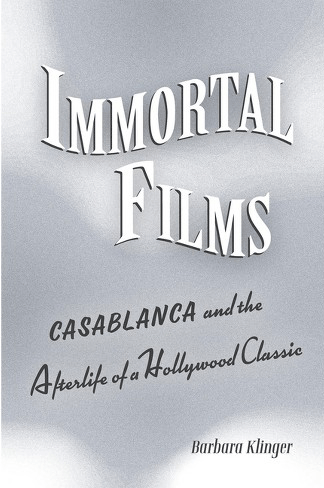New Klinger book explores “immortal” ‘Casablanca’ film
 Provost Professor Emeritus Barbara Klinger explores the history, legacy and lifespan of “Casablanca” in a new book.
Provost Professor Emeritus Barbara Klinger explores the history, legacy and lifespan of “Casablanca” in a new book.
“Immortal Films: Casablanca and the Afterlife of a Hollywood Classic” was published Nov. 15 by University of California Press.
“I chose ‘Casablanca’ because it’s a very high profile, famous older film from the classical Hollywood period, and it circulated very visibly — up until the present moment — for 80 years,” Klinger said. “And that’s a long lifespan for a film that’s made closer to the origins of cinema than to the present moment.”
The book’s nearly 400 pages are informed by archival materials, industry trade journals and cultural commentary. Klinger chronicles the film’s circulation in the United States from the early 1940s to the present by examining its exhibition via radio, repertory houses, television and video.
“So I just went through all the exhibition forms that recirculated it, situated them in their historical contexts and industrial contexts and then talked about how the film’s meaning shifted and changed over the years,” she said.
Many film historians focus on the moment films come out without studying what happens to the film after its premiere period, Klinger said. She was interested in looking beyond a film’s moment of origin.
One of the notable facets of ‘Casablanca,’ Klinger said, is that it’s been a cult film twice in its history of circulation. The film became part of the Bogart cult, as the star, Humphrey Bogart, became a cult figure for college students in particular after World War II. This was a major factor in keeping the film visible in the ‘50s, ‘60s and ‘70s, she said.
Then, “Casablanca” became a Valentine’s Day cult film in the ‘80s as well.
“It made the research really interesting to think about how much its meaning and significance changed from the ‘50s when it was a Bogart film to the ‘80s when it was a romance,” Klinger said. “[Writing those chapters] was really fun and interesting and surprising.”
The first chapter after the introduction explores the radio adaptations of the film. Klinger had not worked with radio before, she said, so that section required extensive preparation.
“I would like readers to think about what happens to a film when it’s plunged into what I’m calling the ‘historical bath,’ when it just keeps on keeping on after its premiere moment, what kind of surprising things can we find out about it,” she said. “I’d like to shake up people’s sense of what ‘Casablanca’ is because it’s been written about and kind of frozen in meaning in a way for a long time. I’d like to show the kind of elegance of history and how history really matters to studying film, not just at the moment when the film comes out, but also over a very long stretch of time.”

